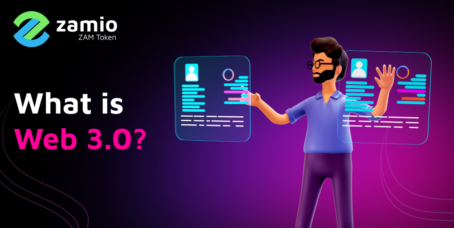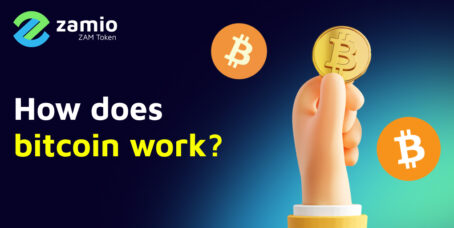Some of the mechanics associated with crypto-liquidity pools can be extremely difficult to understand. Starting with the fundamental principles in fairly simple and accessible terms, there is a lot more to learn on this topic. However, understanding the basics will help you navigate and make informed decisions.
Table of Contents
Let’s start with the main
Decentralized Finance (DeFi) has revolutionized how people handle their assets in crypto markets since its inception. It was only after the launch of DeFi that the user understood what it means to have actual ownership of their assets.
Before the advent of DeFi, users stored crypto assets for years on centralized exchanges such as Binance, Coinbase, FTX, and others. They are a good option for fund liquidity, but they are a nightmare when it comes to the security risks they expose us to. The centralized exchange holds the funds of its users, which means that we can lose all of our funds if the platform suffers a security breach.
DeFi protects us from this danger. But what made the DeFi ecosystem viable in the first place? It is called the crypto-liquidity pool.
Any DeFi platform relies on a pool of crypto liquidity. The possibilities of what we can create with this ecosystem are almost limitless.
What are liquidity pools?
Without liquidity, financial systems will stall. In decentralized finance, liquidity pools help keep things running smoothly.
Liquidity pools are a crypto industry innovation with no direct equivalent in traditional finance. In addition to providing a lifeline for the core business of the DeFi protocol, liquidity pools also serve as hotbeds for investors with a high risk appetite and high rewards.
How do liquidity pools work?
For any economic activity to take place in DeFi, there must be a cryptocurrency. And this cryptocurrency needs to be delivered somehow. This is what liquidity pool is for. (This role is filled by order books and market makers on centralized exchanges, but that’s another story).
When someone sells token A to buy token B on a decentralized exchange, they rely on tokens in the A/B liquidity pool provided by other users. When they buy B tokens, there will now be fewer B tokens in the pool and the price of B will rise. It’s a simple economics of supply and demand.
Liquidity pools are smart contracts containing locked crypto tokens that have been provided by platform users. They are self-executing and don’t need intermediaries to make them work. They are supported by other parts of the code, such as automated market makers (AMMs), which help keep liquidity pools balanced using mathematical formulas. That’s how liquidity pools work.
Pool Benefits
Liquidity pools are the cornerstone of decentralized finance. Their benefits resonate with those of the DeFi environment as a whole. These include high frequency and speed of transactions, reduced access to funding for services and end users, and convenience.
Liquidity pools have breathed life into decentralized exchanges on the Ethereum blockchain. Initially, DEX exchanges were in a precarious position due to low liquidity. Therefore, there were few people willing to trade on DEX exchanges.
Also, the operation of DEXs according to the model of traditional market makers would mean a multiple increase in the cost of each transaction on the exchange, since in this case one would have to pay the commission of the exchange, market makers, and the gas network at the same time. Liquidity pools have fixed this by providing a stable, always-maintained array of liquidity at your fingertips, ensuring trading at stable prices at all times.
Disadvantages and risks
The practice of providing liquidity to DEX exchanges is technically not much different from staking or yield farming, so the risks associated with it are akin to those of these practices.
Impermanent loss — if the price of the pledged cryptocurrency rises, this may make the initiative unprofitable. It is worth carefully studying the market in general and the selected coins in particular, before pledging funds.
Smart contract vulnerabilities — any software protocols are subject to hacking and exploitation. When choosing a liquidity pool, you should focus on the largest and most reputable pools, or accept the possibility that access to funds may be compromised or lost due to a bug or hack.
Manipulation by creators — like any other element of the DeFi industry, liquidity pools are often used to deceive by granting direct access rights to funds in a smart contract to a limited number of people. Novice providers should be especially vigilant when choosing a project.
Prospects and possible applications outside cryptocurrencies
One of the next steps in the development of pools will be the creation of applications that encourage various forms of behavior in the distribution of profits. Such software will allow you to reduce the yield of one new coin to make a profit for other coins that have already gained a foothold in the cryptocurrency market. With the right approach from such a scheme, competent investors will also be able to receive dividends.
An example of such rivalry is Treasury bonds and standard bank deposits. The former can bring much more profit, despite the fact that both pools are backed by the same currency – the US dollar. With better ways to optimize liquidity incentives, the space will continue to grow and open up new ways to profit from DeFi in general.
Conclusion
Liquidity pools are one of the fundamental elements of the DeFi environment. They embody the main idea of decentralization and freedom of access to finance. Pools allow users to trade directly with a smart contract without waiting for permissions and consents from third parties. Anyone can contribute to the liquidity pool. This initiative brings rewards, often multiple. However, it is worth being vigilant in choosing pools.








